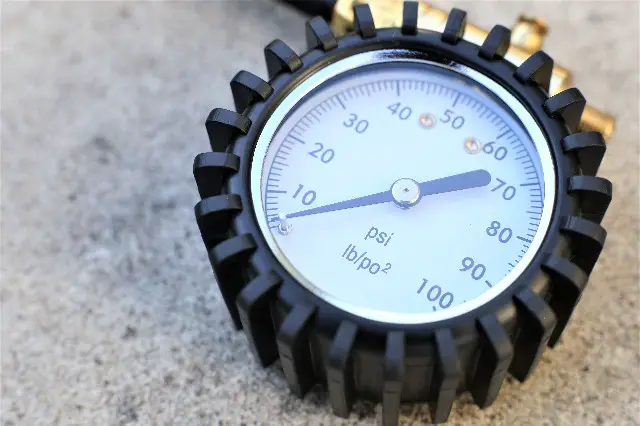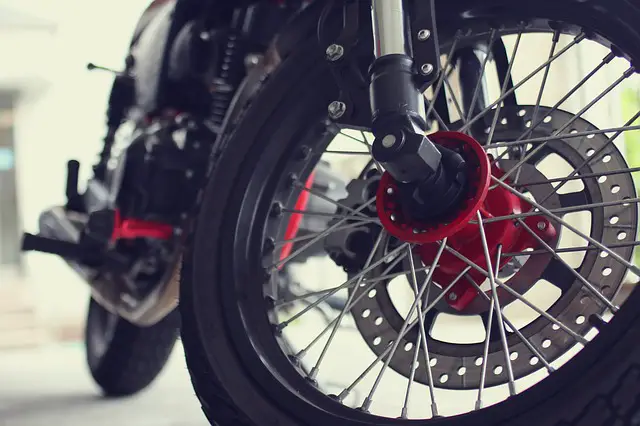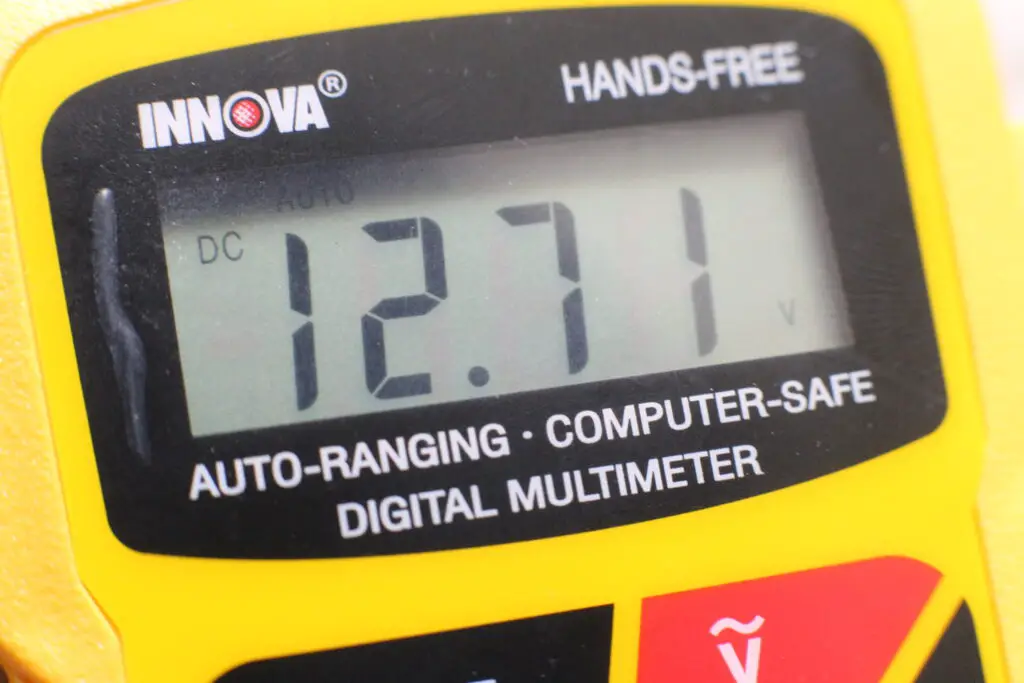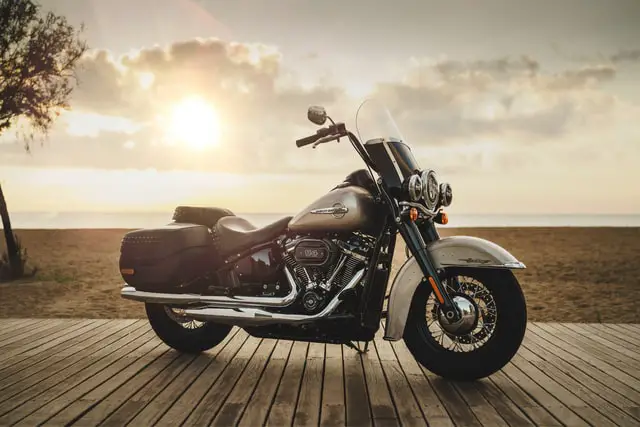I Have to be honest, I dove in completely blind many years ago when I started motorcycle riding.
A couple of months later, I found out that some motorcycles have inner air tubes in their tires as bicycles do.
I conveniently learned this information with a rear flat tire on my bike by the side of the highways…
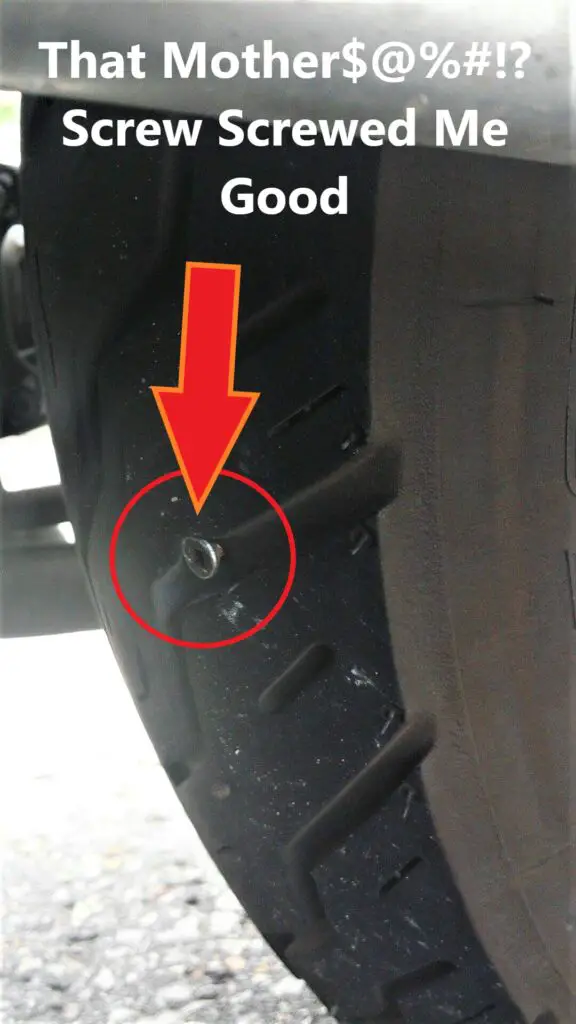
With a useless tubeless patch kit in hand, what a joyful day it was.
Do Motorcycles Use Tubeless or Tube Tires?
These days, a lot of motorcycles use tubeless tires. Yet small bikes intended for off-road such as dual-sport and dirt bikes, often use tube tires. Otherwise, most spoked wheels need an inner tube to be viable regardless of the type of tire.
In general, here is how it is for motorcycle tires today;
A small off-road motorcycle like a dual-sport or dirt bike;

Tube Tire with Inner Tubes.
Pretty much all the rest of modern motorcycles;

Tubeless Tire that May Use an Inner Tube in Some Cases.
Of course, I am giving you the short version.
It is more complicated than that, and there are exceptions.
So how come motorcycles don’t use the same type of tire, and why do some need an air tube?
Tubeless Vs Tube Motorcycle Tires What Is The Difference?
Tube tires are softer and deal better with repeated abuse and shrugging off impacts in off-road conditions. But they need an inner tube to stay inflated. Tubeless tires do not need a tube and create their own air chamber while seated on an airtight rim.
A long time ago, back in the old days, tube tires were the only choice you had when riding motorcycles.
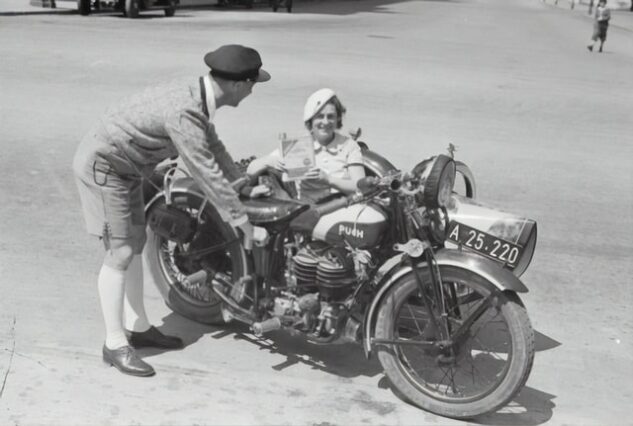
Anyways, back on the subject…
Today, tube tires are mostly reserved for off-roaders enthusiasts.
As insinuated in the ‘’tube’’ classification, a tube tire needs an internal air tube between the tire and the rim.
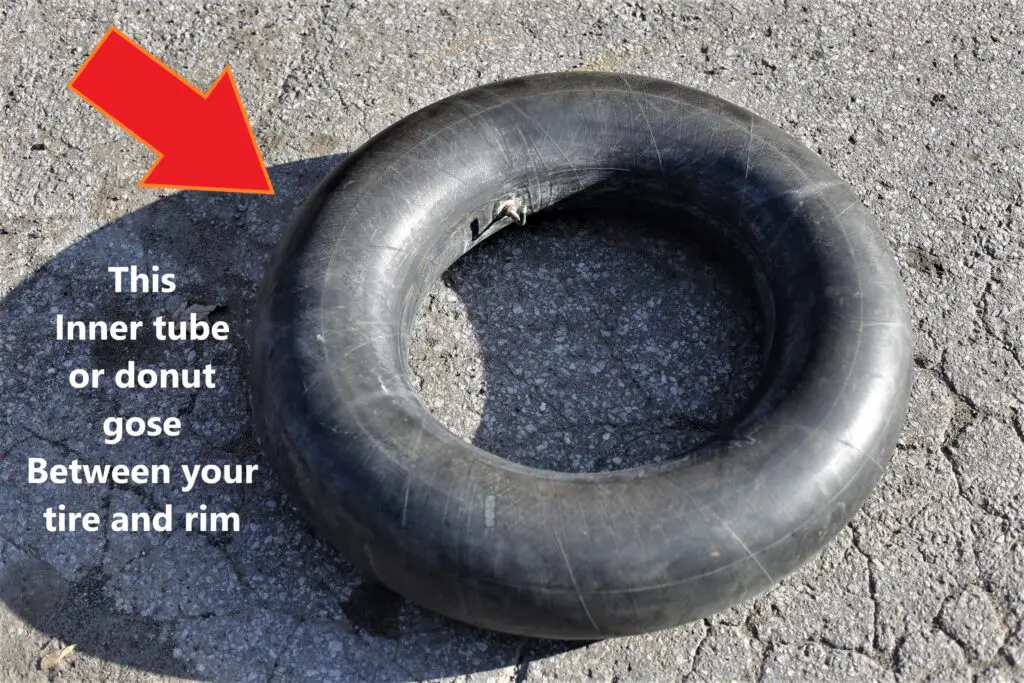
A Tube tire’s sidewalls are too soft to create an effective airtight seal against the rim.
On the other hand, Tubeless tires, do not need an inner tube as long as the rim is also classified as airtight.
These days, a tube tire or Tubeless is not better than the other per see.
Instead, they are filling different roles on different wheel setups.
Motorcycle Tire Configurations
There are four standard configurations for motorcycle wheel and tire.
Some settings use inner tubes, and some don’t.
1. Tubeless tire with airtight alloy cast wheel.
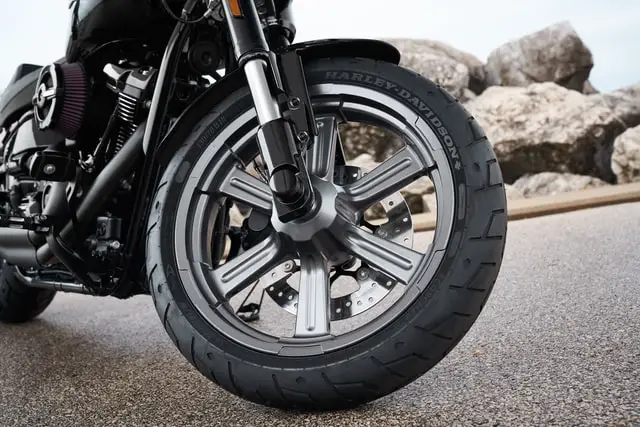
The most common setup for street and roads motorcycles
2. Tubeless tire on a sealed spoked wheel.
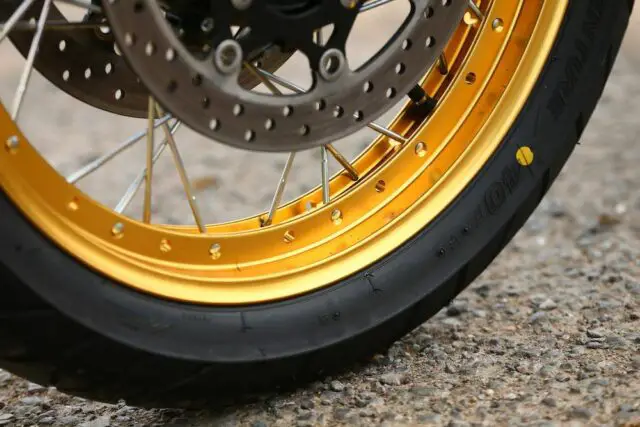
Found mostly on higher-end adventure bikes.
Combine the practicality of tubeless tires but also retain the flexibility of spoked wheels.
3. Tubeless tire seated on an unsealed spoked wheel.
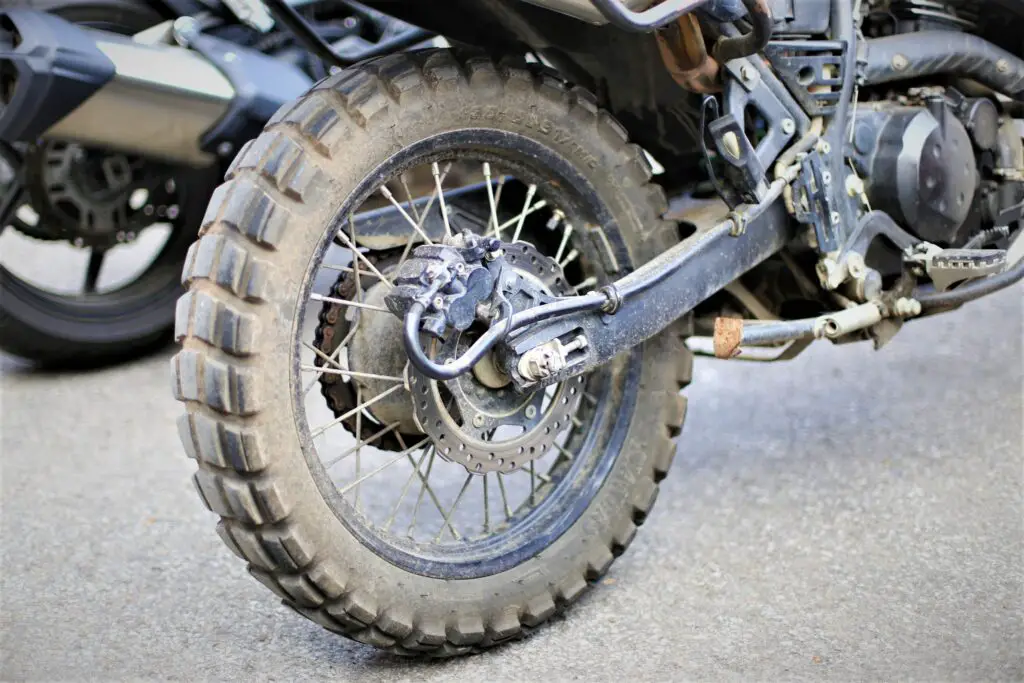
This setup requires an inner tube to stay inflated.
Used by some off-road capable bikes such as scrambler and adventure motorcycles.
This setup is also popular with road motorcycles that want to keep an old-school look, especially cruisers bikes.

4. Tube tire on an unsealed spoked wheel with an inner tube.
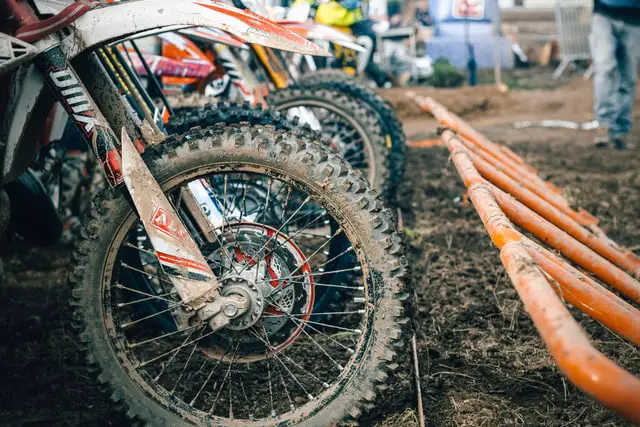
Mostly found on small off-road specialized motorcycles such as dirt bikes.
So motorcycles tires can be confusing… I know, why make it simple? Apparently it ‘’needed’’ to be complicated…
But It boils down to this;
tube tires are more adapted for heavy and aggressive riding on small off-road bikes.
Tubeless tires cover pretty much everything else.
Motorcycle Tube Tires vs Tubeless Pros and Cons
Tube tire combined with an inner tube and a spoked rim is straight-up better to handle rough off-road terrain.
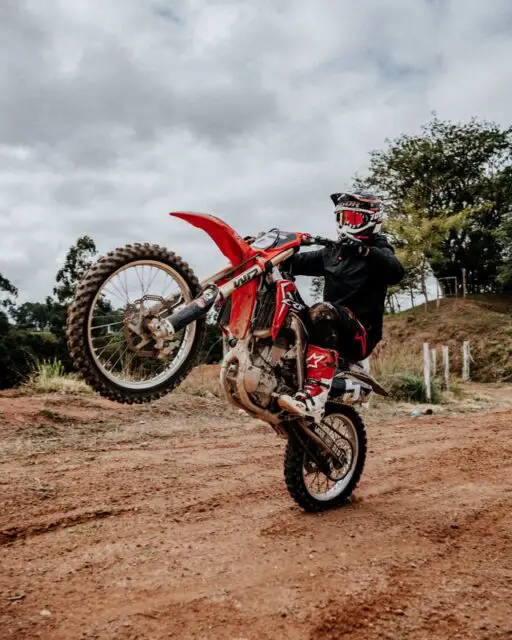
If you look at the most off-road capable motorcycles, chances are;
- It has unsealed spoked wheels which must have an inner tube.
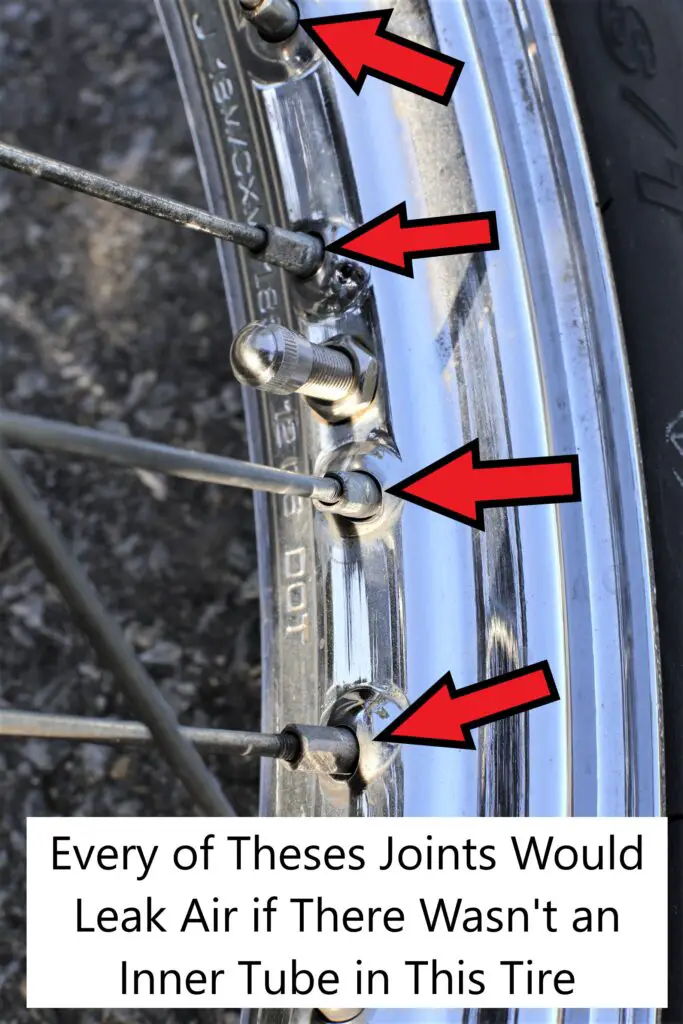
- Knobby off-road tires are often Tube-type (TT) and require an inner tube.
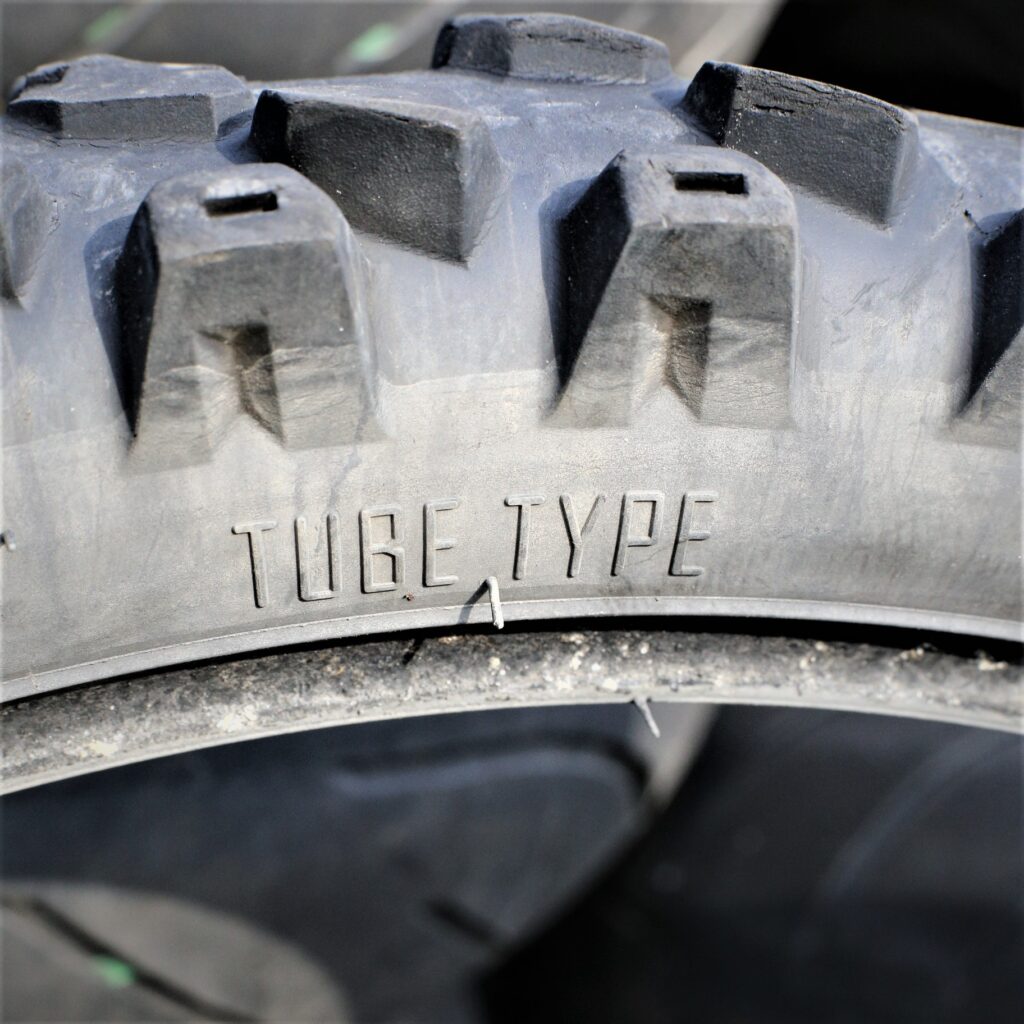
In this situation, you got two reasons, not only one that an air tube is required.
Both a tube tire and an unsealed spoked wheel need an inner tube to keep the tire inflated adequately.
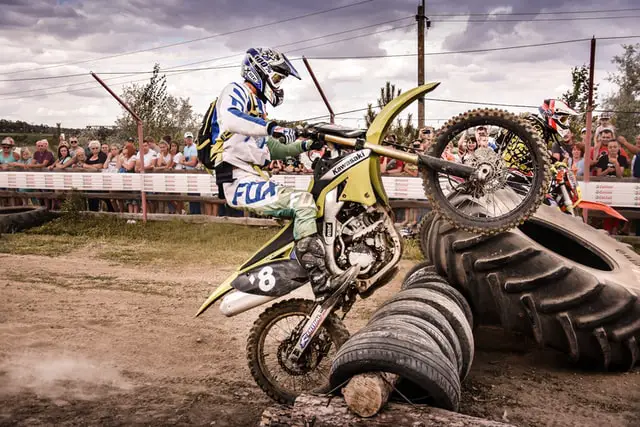
Impact Absorption
A spoked rim, tube tire, and an inner tube is the best combination for the wheel to bend and flex to cushion and absorb hard impacts from obstacles while riding.
For example, rolling over a tree branch, rocks, and other obstacles on the trail will stress a bike’s wheels.
Mitigating impacts is where tube tires excel.
As an example, I want you to notice two things in this video.
See how upon impact;
- The tubed tire sidewall expands sideways as the tire collapse.
- The metal rim is crushed and flex inward, but then bends back into its original shape.
Even though this is a bicycle tire in the example video, it doesn’t matter.
The same principles of impact reduction apply to a tube tire with a spoked motorcycle wheel.
Everything in that wheel is designed to maximize the sharing of impact forces between the wheel components.
That is not the case on a tubeless tire setup with a metal cast wheel that is limited in impacts force mitigation.
One-piece alloy cast motorcycle wheels do not like severe impacts and could either shatter or bend beyond repair.
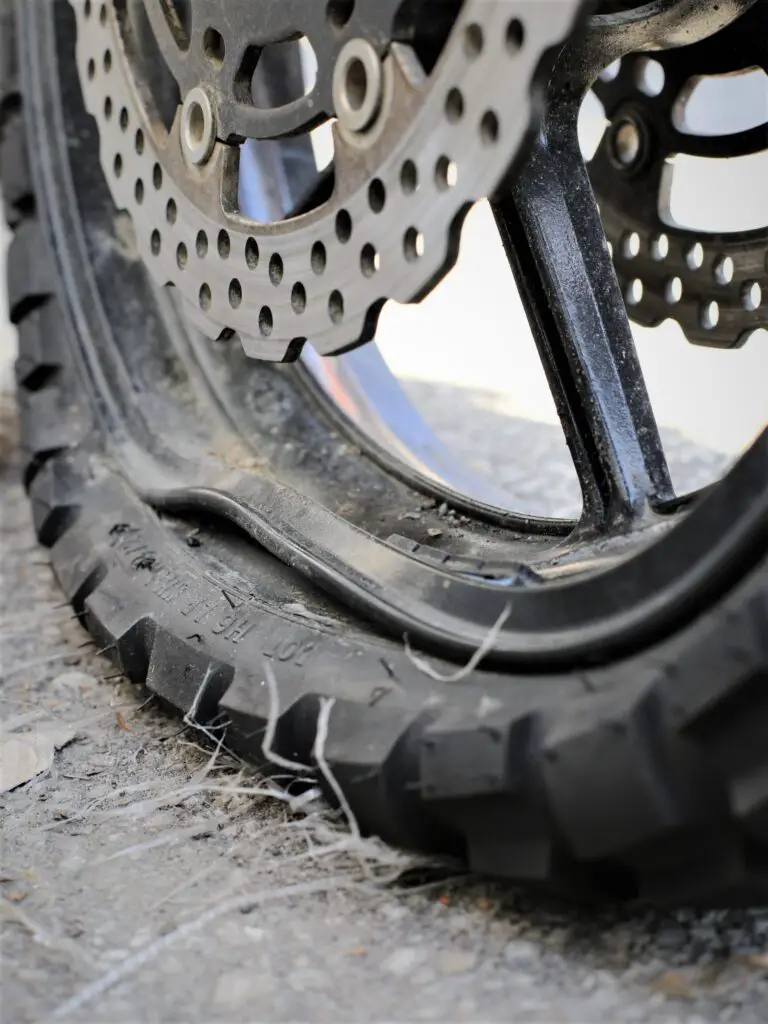
Otherwise, a spoked wheel could shrug it off or be salvaged by replacing some spokes.
Some bigger off-road motorcycles go for a middle ground setup and use tubeless tires on spoked wheels.

An air tube could be required depending if the spoked rim is airtight or not.
Tubeless and Tube Tire Changing and Dealing with Flats
Unless the source of the damage is located on the tire sidewall, dealing with your average puncture is much easier on a tubeless motorcycle tire.
It boils down to removing what punctured your tire, such as a screw or nail, opening and cleaning up the hole, then inserting a tire ‘’rope’’ patch.
Cut off the excess rope, inflate the tire, and you are good to go in 5 to 20 minutes.
On the other side of the coin, patching a flat with a tube tire takes longer and can be quite a pain in the butt.
If a tube tire is flat, that means that the inner tube is damaged or punctured.
You will first need to remove the wheel then take off the tire to access the tube to patch it or do a replacement.
Thankfully you have at least one advantage; it is much easier to take off a tube tire from its rim than a tubeless one.
With the softer sidewalls of a tube tire, it is much more easy to break the tire bead and remove the tire with basic tire iron tools.
On a tubeless tire, the sidewall can be so stiff that it will require most of your muscles strength.
With particularly stubborn tubeless tires, you may even need machinery such as a motorcycle tire ”de-rimer” to take off the tire.
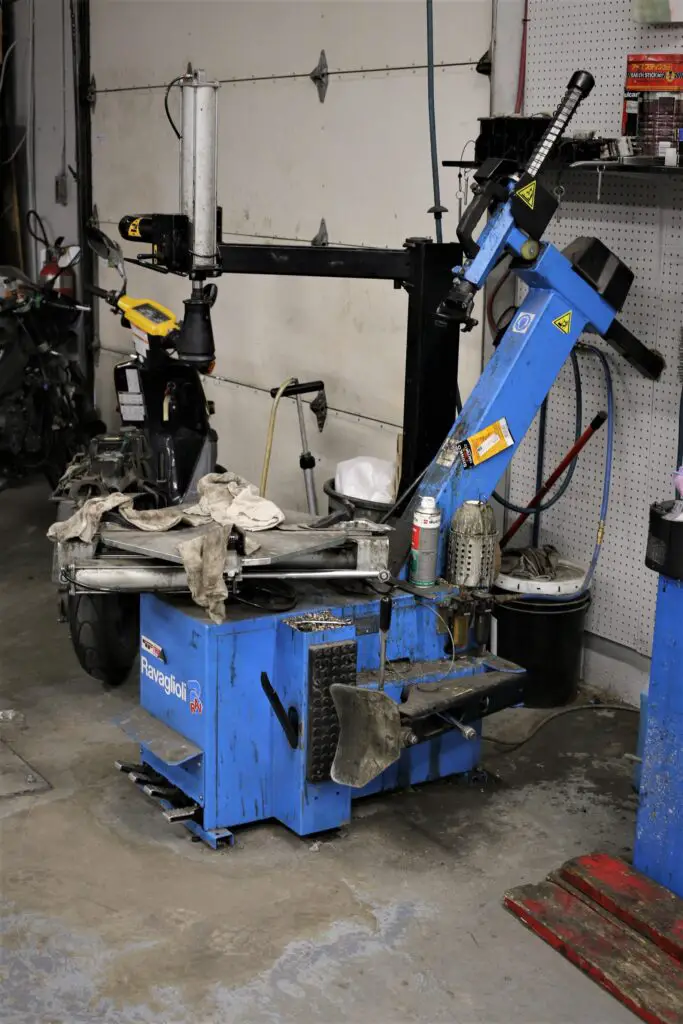
The worst-case scenario is dealing with a flat with a tubeless tire that still uses an inner tube.
Taking off a tubeless tire on the side of the road will be difficult due to its stiffness.
Then you need to patch up or replace the tube and again fight a stiff tire to put everything back in place.
That is what happened in my flat tire story at the beginning of the post.
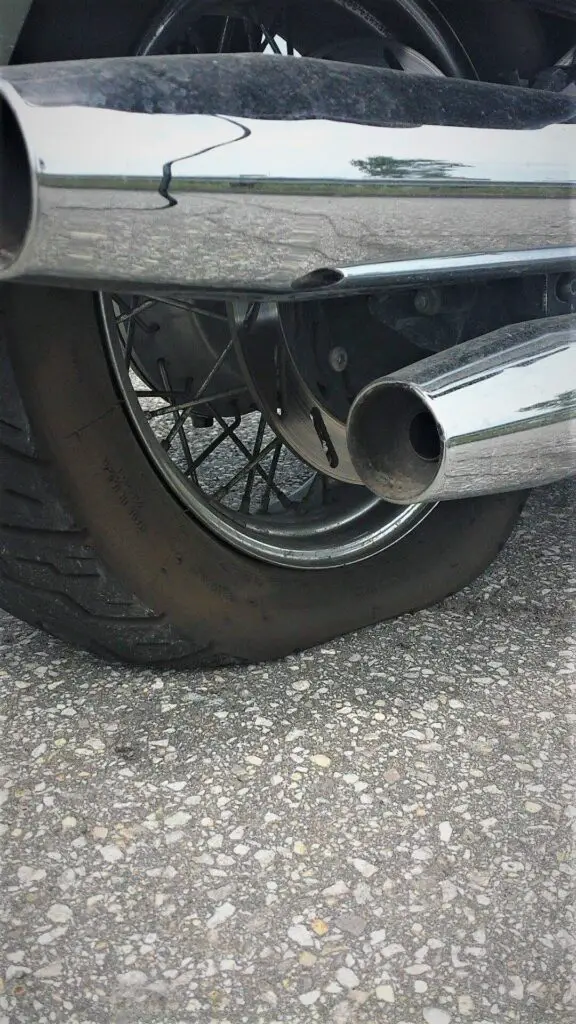
This day taught me much, but it doesn’t mean I like to remember it.
I was not prepared XD.
Are Tubeless Motorcycle Tires Safer?
An inner tube in a tube tire is prone to sudden and complete air loss in case of a puncture. This abrupt flat tire could quickly make a bike unstable and cause a crash before the rider notices anything weird. Tubeless tires are usually more puncture-resistant and got some limited auto-sealing properties.
With a tubeless tire and a sealed rim, chances are it will take longer for the tire to be empty of air due to a puncture.
It may leave enough time for a rider to realize something wrong with the bike handling and pull safely to the side of the road.
I personally experienced it, and I would agree that these extra moments to respond to the situation help.
Quick History Lesson On Motorcycles Tire Type And Why Some Motorcycle Model Still Come With Inner Tube
Even though cars stopped using tube tires with inner tubes long ago, motorcycles took their sweet time to adopt tubeless tires.
Back in the days, when your grand granddaddy was in his prime, motorcycles only came with spoked wheels and tube tires.
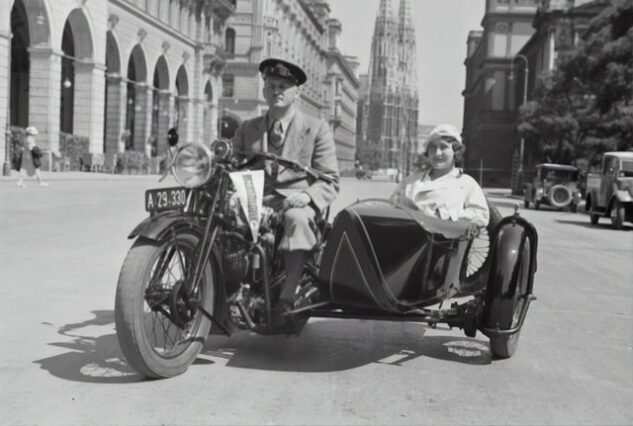
In 1960 – 1970, motorcycles started upgrading to tubeless tire design but retained spoked wheels and required inner tubes.
This retro look is carried today by some motorcycles for no other reason than a classic feel and style.
For instance, this is the case with my second bike, my beaten-up Honda Rebel 2008.
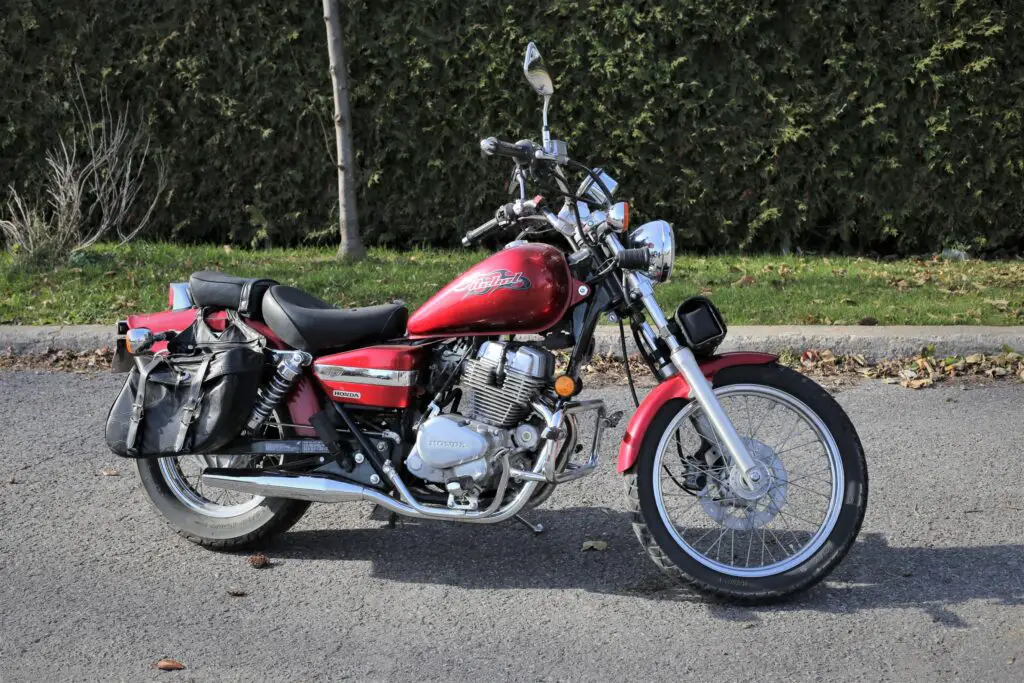
This bike uses tubeless tires but needs inner tubes since it got spoked wheels.
Yet even if this motorcycle got spoked wheels, there is no way I’m taking this bike off-road.
The bike got spoked wheels for no other reason than displaying the motorcycle industry legacy.
These days though, the vast majority of motorcycles come with alloy cast wheels.
For mass production purposes these days, one-piece wheels are much more convenient and cheaper to produce.
Is My Motorcycle Rim Tubeless Or Tube?
A spooked wire wheel is the first solid sign that there is an innertube under the tire. Another way to know for sure is to look at the tire valve. If there is a nut mounted on a treaded valve, this is a tube setup.
In the case you got a solid alloy wheel, meaning no thin wires on the inside of the wheel, it is a tubeless tire and sealed rim.

If a motorcycle has spoked wire wheels, and the end tip of the wires disappears in the middle of the rim, there is an inner tube inside the tires.

Yet there are some sealed spooked wheels.
These wheels use the best of both robust spoked wheels and the convenience of tubeless tires.
In that case, look for the end tips of the spoke wire. If anything prevents them from getting inside the rim like a side mount, it is a sealed rim that uses a tubeless tire.
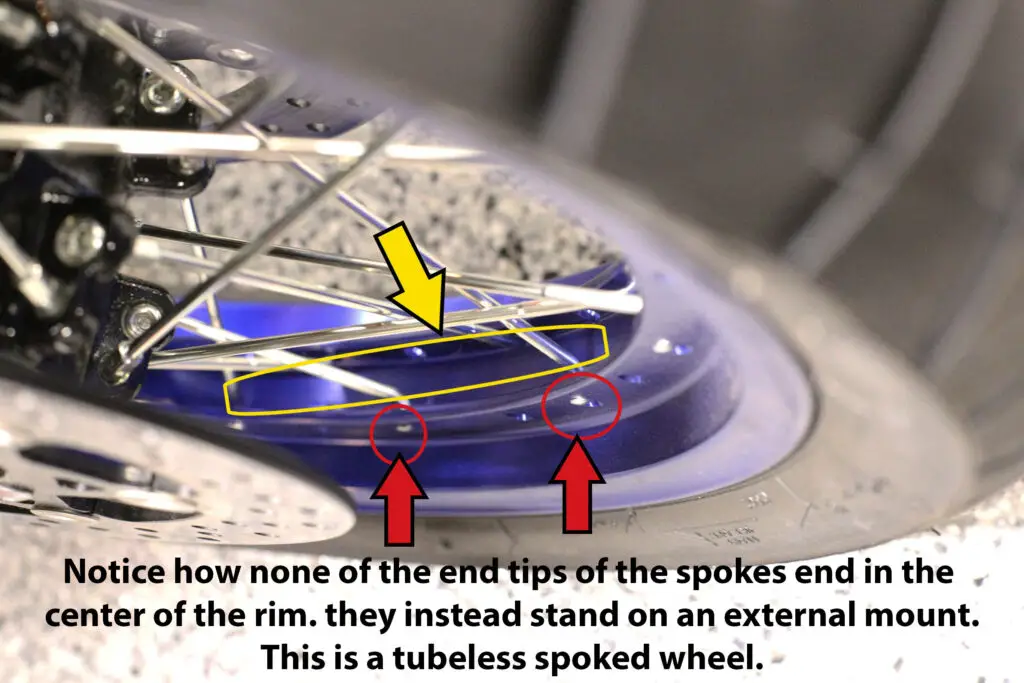
In case you have doubts, find the tire valve. If the vale has a tread and there is a screw nut, there is an inner tube inside the tire.
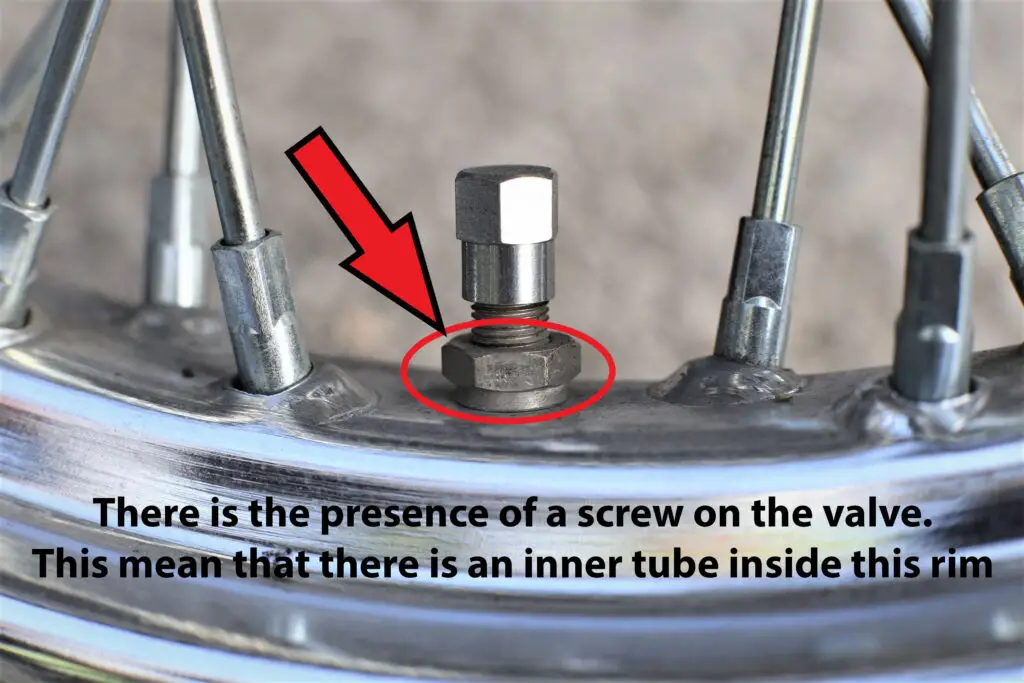
On the other hand, if there is no tread and nuts like in the following image, this is the valve of an airtight rim, and it uses a tubeless tire.
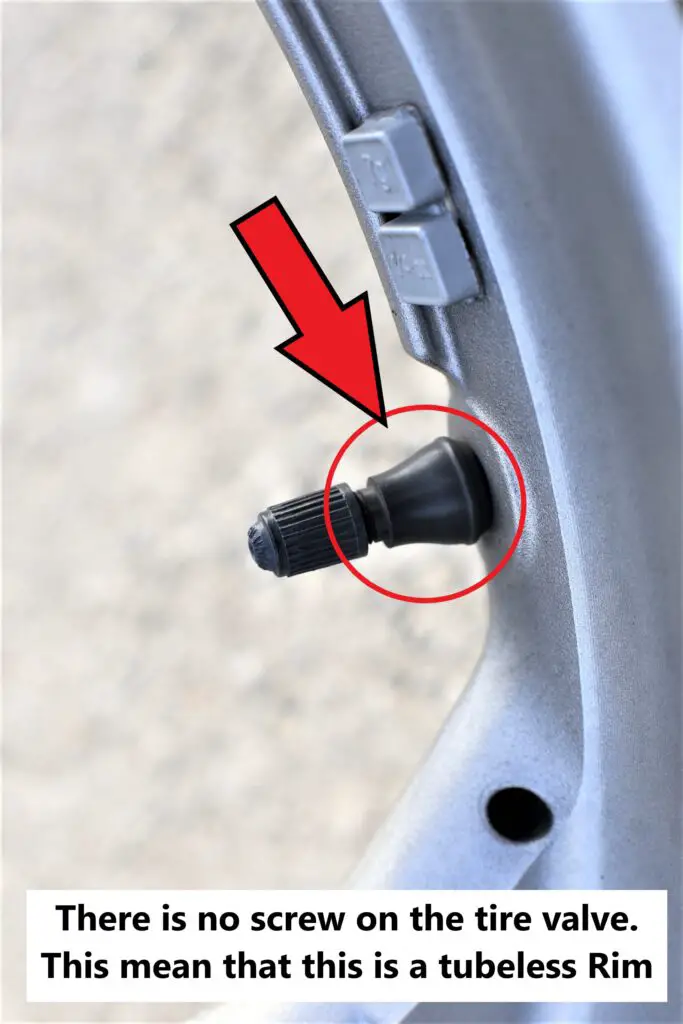
Is My Motorcycle Tire Tubeless Or Tube?
A marking on the tire sidewall will mention if a tire is a tube or tubeless type.
It could be obvious such as ”Tubeless, Tube, or Tube Tire” written in evidence. In that case, it is a no-brainer what type of tire it is.
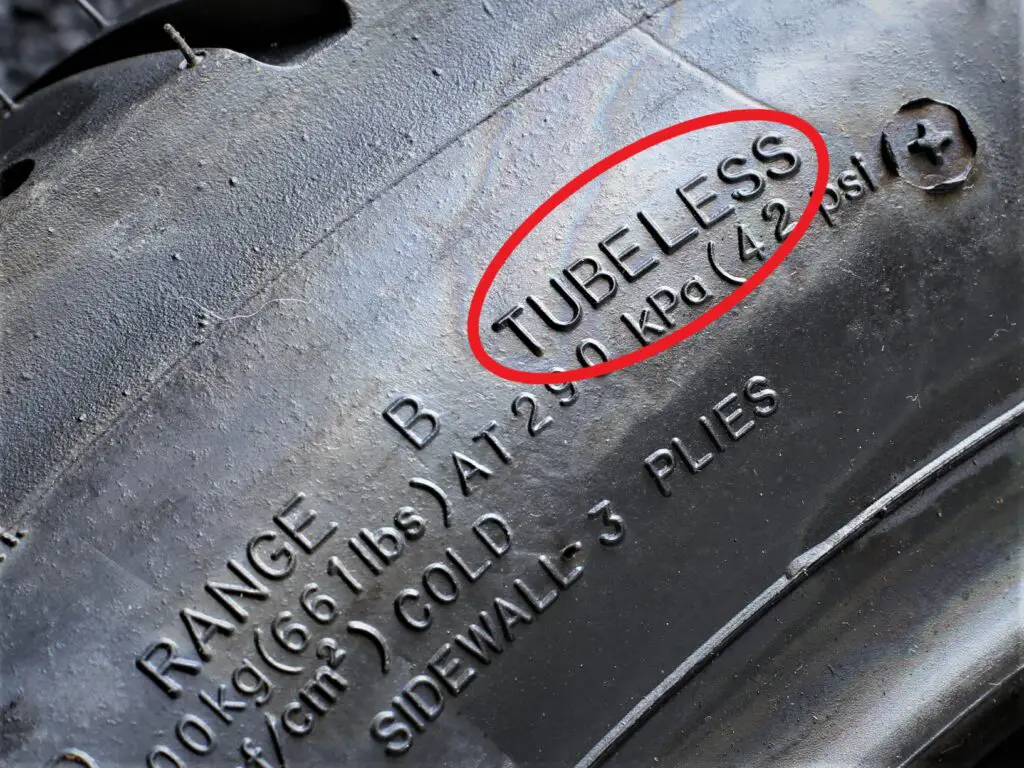

If you can’t find the mention of ”Tube” or ”Tubeless”, you are looking for a two-letter code. TL or TT.
If a tire mentions the code TL, this means Tube-Less.
In the second case, TT means Tube tire.
If you still have doubts about what your motorcycle tire setup is, look it up in the book of all answers, meaning open up your owner manual.
Can You Put A Tube In A Tubeless Motorcycle Tire?
Yes, it is even a valid tire and wheel setup used by motorcycle manufacturers. It is often used in combination with an unsealed spoked wheel to keep the tire inflated.
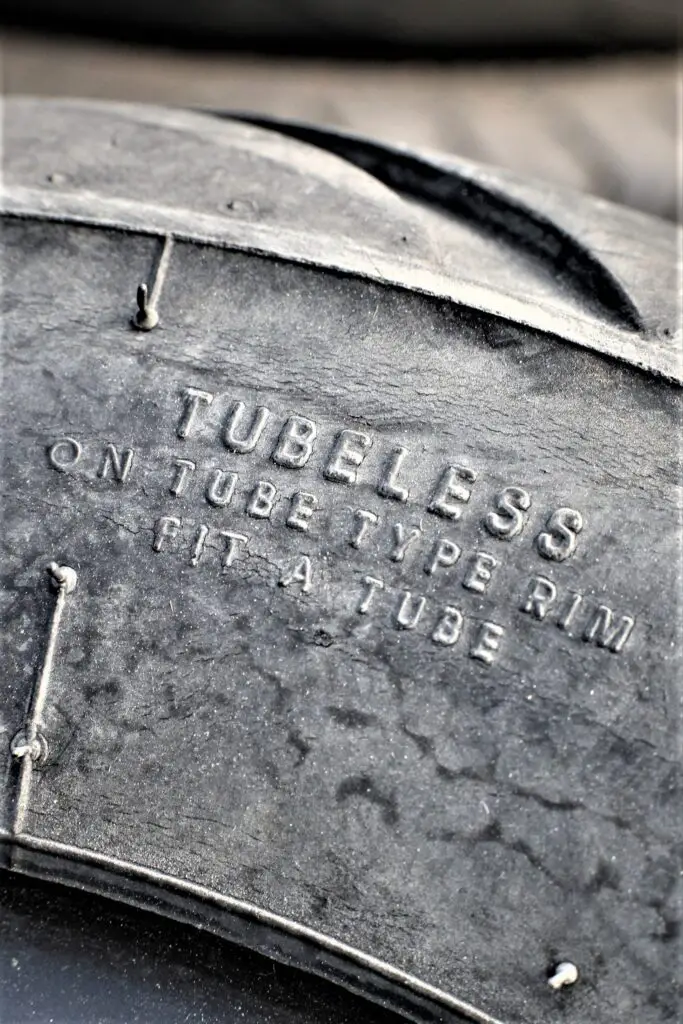
Yet, it is worth noting that it causes some drawbacks.
First, an inner tube with a tubeless tire will generate extra heat.
It could jeopardize the rated heat tolerance of your tube and tire, and they may not like it.
An overheating tube could suddenly deflate by tearing up due to disintegrating rubber, causing a blowout.
To be on the safe side, I recommend limiting your ridding speed to the rating below your tubeless tire rating.
If you don’t know what rating is your tire, look on your tire sidewall.
You should find a code looking similar to this.
It will either be a lone letter or two numbers followed by a letter.
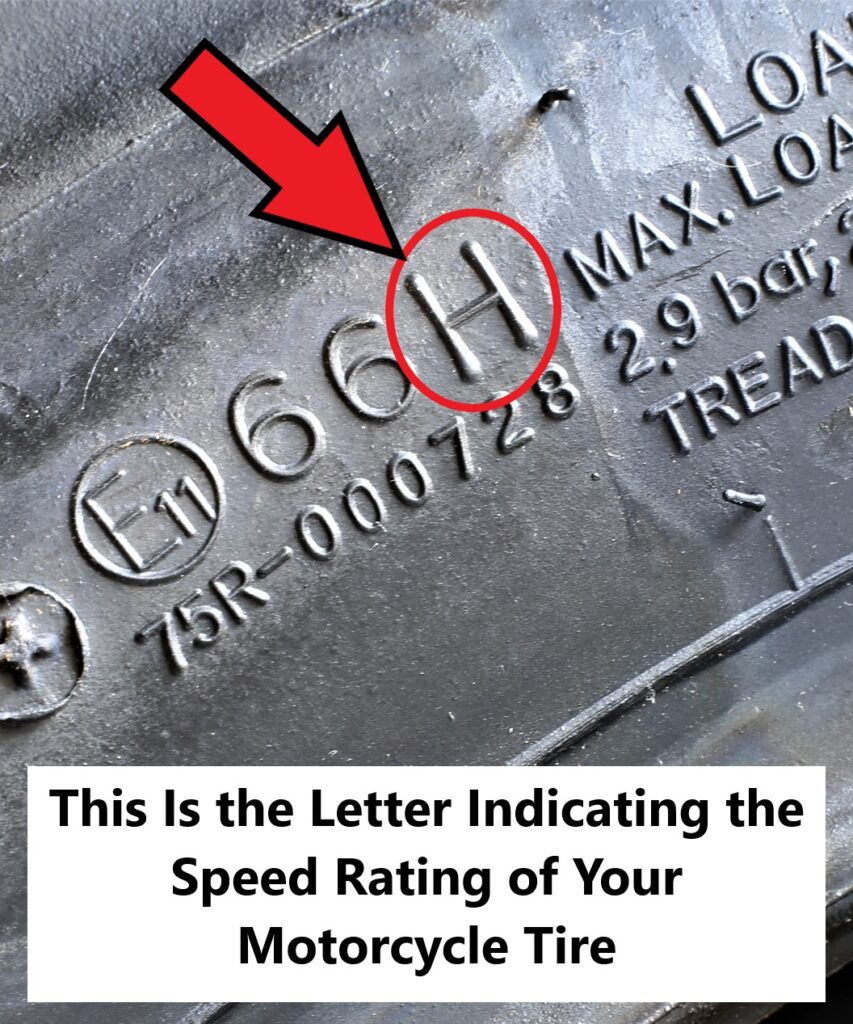
Find that letter code, and compare it to this chart.
| Rating Letter | Maximum Speed The Tire is Rated For (MPH) |
| J | 62 |
| L | 74 |
| M | 81 |
| P | 93 |
| Q | 100 |
| R | 106 |
| S | 112 |
| T | 118 |
| H | 130 |
| V/VB | 149 |
| W | 168 |
If you use an inner tube, do not exceed riding speed to the following rating below the one your tire already has.
For example, if your tire is rated for H, assume you are using a T rated tire.
Lastly, if you plan to use an inner tube in a tubeless tire, a flat will not be an enjoyable situation.
As usual with a tube, you will first need to take off the tire to deal with the problem. Since tubeless tires are notoriously challenging to take off the rim, I wish you the best of luck and patience.
Can I Put A Tubeless Tire On A Tube Rim Motorcycle?
Although it is not recommended, this is a possible setup to use with some modifications. To be viable, the rim will need modifications to be airtight. It is done by installing a special rim tape on the inside of the rim and sealing air leaking locations such as the spoked wires entry point.
Unless the rim is airtight, what is the point of putting a tubeless on it? The tubeless tire will be flat in minutes, if not seconds.
Air-tightening an unsealed spoked rim is possible, but it generates problems.
First of all, there is no guarantee that the sealant will hold as well as needed. Slow leaks over time are a real possibility.
Secondly, the spoked wheel’s wires need adjustment to loosen or tighten from time to time to keep the wheel structure balanced.
Since you need to airtight every wire end tip, if you adjust any spokes, there is a high probability that you will break the seal.
Is converting an unsealed spoked rim to airtight viable? Yes, and It is way cheaper than buying dedicated sealed spoked wheels.
But, that is up to you if you want to deal with the potential issues.
Tubeless vs Tube Motorcycle Tire, Wrapping it Up.
I hope that whatever confused you about motorcycle tires, I helped you clear it up.
As a quick recap;
The vast majority of motorcycles have alloy single-piece wheels – Tubeless
High-end off-road motorcycle – Maybe sealed spoked rim with tubeless.
Spoked wheel – Inner Tube with a Tubeless tire most of the time.
Lastly, ‘’tube tires’’ are for small off-road motorcycles such as dirtbikes or vintage motorcycles that are old as dirt. 🙂
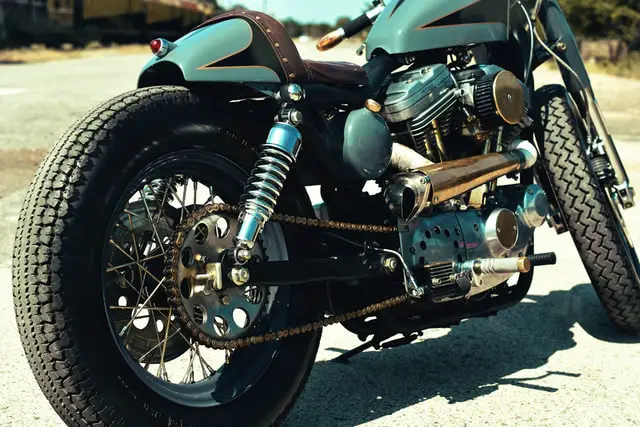
If you still have to buy a bike or plan to get another one, here is my advice.
If you plan to ride on pavement most of the time, choose a motorcycle with an alloy cast wheel that uses tubeless tires.
Not having an inner tube It is much more convenient on the roads to deal with flats.
Otherwise, have the best of fun off-road.
Best of luck that both your tires hold air all the way.
Take care. Ride safe.
A sincere thank you to Laval Moto. I was allowed to fiddle around their motorcycles for taking pictures that served as visual examples in this post.

